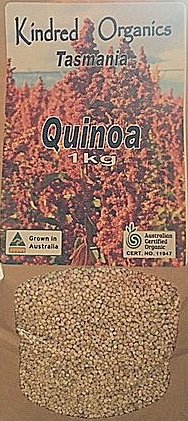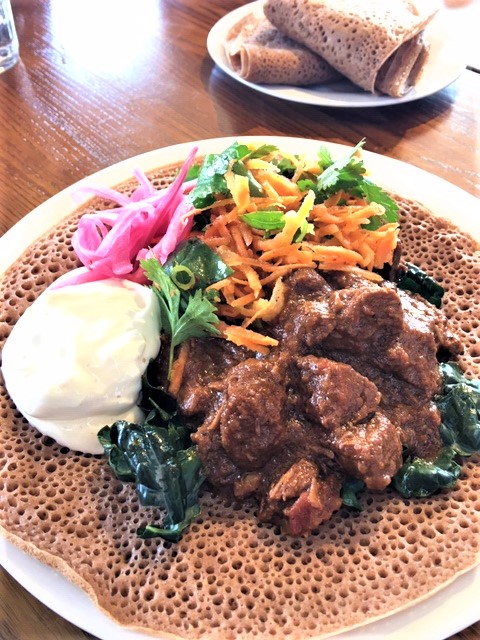Tasmania is lucky to have access to a wide range of local, fresh, special flours from a variety of grains that provide an alternative to conventional wheat flour.
This article explores a few of these alternative special flours that are either grown in Tasmania or that are used here to great effect!
Special Flours – Spelt
Spelt is an ancient grain that has recently become more widely available throughout the world.
One of the places where it has been grown for some time is on the southern slopes of Mont Ventoux in Provence near the beautiful village of Sault. And now it is grown on the North West Coast of Tasmania near Deloraine by The Grain Family.
Every Saturday they sell their wares at Harvest Launceston and on Sunday at the Farm Gate Market in Hobart. The flour is freshly milled in season provided you pre-order by Thursday morning.
Note that it is only available some of the year so you need to order it in season.
Spelt does have some of the same issues as wheat flour such as phytic acid and FODMAPS which can exacerbate Irritable Bowel Syndrome. However, if you use spelt to make sourdough breads (ie naturally ferment the flour) then the FODMAPS in the flour are significantly reduced.
You can also substitute spelt for rice and make a delicious risotto from this grain using any recipe that you use for a standard risotto.
Special flours – Quinoa

Quinoa is also an ancient grain which used to be a favourite food of the Incas in Peru and beyond.
It has the advantage of being gluten free and packed with fibre as well as essential minerals such as magnesium.
Quinoa seeds are perfect for rounding out a salad or making a breakfast porridge or a non-rice risotto.
Some people find untreated quinoa slightly bitter due to the coating of a substance called saponin. This is easy to remove if you react to bitterness by simply placing the seeds in a wire strainer and running cold water over them for a minute or so.
The flour of quinoa can be used to make bread (although you might need to mix it with other flours) or pancakes. You can easily make your own flour by placing the seeds in a spice grinder (only fill it to about one-third) and whizzing it for a minute or so.
We are lucky to have a fresh, organic supply of this grain and flour in Tasmania that is grown and harvested by Kindred Organics. It is available through Eumarrah in Hobart.
Special Flours – Buckwheat
Buckwheat is a fascinating product, and, despite the name is neither a wheat nor a grass.
However it is a very attractive seed because it is gluten-free and high in protein, fibre, Vitamin B and Potassium.
We particularly like making sourdough blinis using buckwheat. Simply place some buckwheat flour in a non-reactive bowl and cover it in water. Cover the bowl with some cheesecloth and then each morning for three or four days remove half of the mixture and add the same amount of buckwheat flour and enough water to make it lightly liquid and stir to incorporate.
This is a standard way of making a sourdough mix. We will publish a recipe for how to make the pancakes soon.
Buckwheat is grown in Tasmania by Kindred Organics and is available from Eumarrah in Hobart.
Special Flours – Khorosan
Khorosan is a bit like spelt, being another ancient grain and that is high in protein and is not gluten free.
It provides breads, pizzas and other baked products with an interesting texture even if only about 15% of this flour is used.
It originates from the Middle East in North Eastern Iran and has been used there for thousands of years.
Some people may know this grain as Kamut, however this is a name that was given to it in the United States and then trade marked. So, we stick to the original name.
It is grown in Tasmania by The Grain Company and can be bought, in season from their stalls at the Launceston Market and the Farm Gate Market in Hobart.
Special Flours – Teff
Teff is an ancient seed rather than a grain that was originally indigenous to northern Africa in Ethiopia, eastern Sudan and Eritrea. The seed is mainly used as a flour. It is ground and fermented mainly to make an amazing “bread” called injera which characteristically is covered with small holes (a bit like a thin crumpet) which pick up the juices from the food served with it.
It is often used by people who have an intolerance of gluten because teff flour is gluten free. The tiny seed can also be used in place of rice and grains like quinoa or barley. A Tasmanian company called Tasglobal Seeds has indicated that it is planning to grow a brown variety called Eragrostis teff.
This special flour isn’t grown in Tasmania yet but is used to great effect by the Migrant Resource Centre in Glenorchy to make the extremely tasty Ethiopian bread called Injera which we enjoy nearly every time we visit.

Conclusion
There are a number of other special flours that are available in Tasmania. We always look forward to the polenta made by the Agrarian Kitchen from a special blue corn that they grow. It is absolutely delicious!!

































